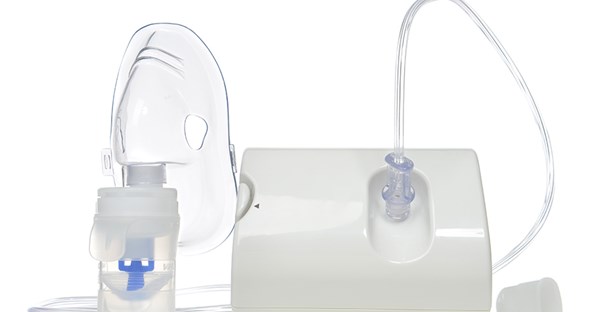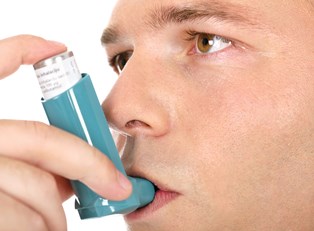Asthma is a chronic respiratory disease characterized by inflammation leading to impeded airways and difficulty breathing. Inhalers may be long term (preventative) or short term (fast acting to open airways). Many different types of medications are used in these inhalers, depending on the specifics of the case. Here are a few lists of different types of asthma inhalers:
Delivery Methods
Metered dose inhalers (MDI) are like a medicated version of an aerosol can. When you push the inhaler, it emits a cloud of medication to inhale. It’s important to remember to shake the inhaler first and then hold your breath following inhalation. An MDI with a spacer can be useful for children because it gives a longer chance to inhale.
Dry powder inhalers (DPI), or breath activated inhalers, are easy to use for most people. They work via your breath, rather than by pressure. As such, they are not optimal for emergency situations like an asthma attack. They expel in a cloud of dust rather than vaporized liquid, which means you can lose some medication if you exhale, and humid weather can make the medication clump.
Nebulizers are sometimes used for people with severe cases of asthma, as well as children, who have difficulty using other forms of inhalers easily. Nebulizers come with a facemask through which vaporized medicine is emitted. Alternatively, facemasks are available and generally used in tandem with an MDI with a spacer.
Inhaler Color Codes
Asthma inhalers are generally color coded, allowing patients to use the right one more easily. Not every company or country follows the same code, which can create difficulty and confusion--particularly in a state of panic during an asthma attack.
According to the National Institute of Health, the colors of the asthma inhaler list include “inhaled corticosteroids (short term, fast acting) are available as brown, white, magenta, blue, orange brown, and red inhalers. Long-acting beta-agonists (long term, preventative) are now marketed in green, blue, white, and greenish blue containers. The new hydrofluoroalkane propellant-based salbutamol is marketed in red or yellow jackets... Inhaled steroids and LABA combinations were introduced in violet, red, and brown inhalers.”
The overlap of these colors makes the color coded system especially confusing; additionally, inhalers that combine multiple drugs can make things even trickier. For the most part, inhalers intended to be used to prevent asthma attacks and symptoms are brown, while those intended for relieving symptoms come in blue. While not perfect, as long as you know what your individual inhalers’ colors mean the system can be helpful.
Inhaler Medications
Inhalers come with different medications; there are over the counter asthma inhalers available, but be sure to consult a doctor about any serious medication use. These lists of asthma inhalers includes the most common drugs and corresponding brands:
To relieve symptoms quickly:
The best bronchodilators for immediate relief is generally a short-acting beta 2 agonist (SABA). SABA inhalers include:
- Albuterol: Ventolin, Ventolin HFA; Proventil, Proventil HFA; ProAir, ProAir HFA, ProAir RespiClick; Vomax; Vospire ER, Airet, and AccuNeb, )
- Levalbuterol: Xopenex; Xopenex HFA, Xopenex Concentrate
Prevention and long term management:
Corticosteroids in inhalation form (or inhaled corticosteroids, ICS) are commonly used to control asthma on a day to day basis by keeping airways from becoming inflamed and too much mucus from developing. ICS include:
- Beclomethasone: Beclovent; Qvar
- Budesonide: Pulmicort Nebuamp, Pulmicort Turbuhaler, Pulmicort Flexhaler, Pulmicort Respules
- Ciclesonide: Alvesco
- Flunisolide: Aerospan HFA; Aerobid, Aerobid-M,
- Fluticasone: Flovent, Flovent Rotadisk, Flovent Diskus, Flovent HFA; Arnuity Ellipta,
- Mometasone: Asmanex HFA, Asmanex Twisthaler
Combination drugs:
If you are like many patients with asthma, a combination of medications works best for you. A long-acting beta 2 agonist (LABA) alone is not generally recommended, but combined with an ICS, it make be very effective for someone who doesn’t respond to an ICS on its own. LABAs include salmeterol (Serevent) and formoterol (Perforomist, Foradil Aerolizer). Combinations of LABAs and ICSs include:
- Budesonide/formoterol: Symbicort
- Fluticasone/salmeterol: Advair Diskus, Advair HFA
- Formoterol/mometasone: Dulera




